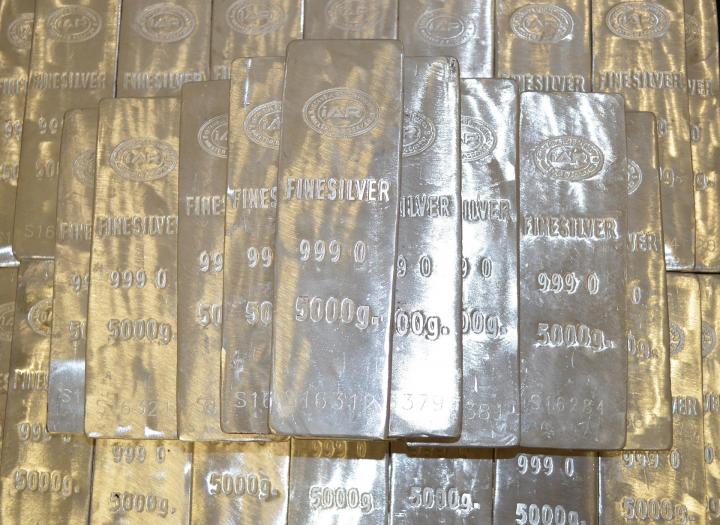
After the sharp rise in the gold price, silver is also on the move. Specialists expect further gains, pointing to declining confidence in public finances and fiat money.
At Dutch asset manager Optimix, they have been fans of precious metals for years. According to portfolio manager Arjen Van der Meer, the strategy is an important part of the asset allocation. The firm has long held sizable positions in precious metals, entering gold in 2020 and adding silver to portfolios a few years later. Recently, Optimix sold part of its gold holdings, reducing the share of precious metals in neutral portfolios from 10 percent to about 8 percent. Of that, silver accounts for 3 percentage points, invested through the iShares Physical Silver ETC.
The metal is having a stellar year: since the start of January, silver is up 31 percent, slightly ahead of gold, which gained 28 percent. In the short to medium term, silver is driven by real interest rates, inflation expectations, and the dollar, says Van der Meer. “But over the long run, we see silver and gold mainly as a hedge against currency debasement, the result of continued monetary expansion relative to GDP.”
The strong rally in gold and silver shows, in his view, that investors are increasingly factoring in future debasement. “High budget deficits and rising public debt increase the likelihood that the Federal Reserve will eventually resume buying Treasuries and inject more dollars into the system.”
Structural shortages
Van der Meer stresses that fundamental factors in the silver market have little impact on the price. Although there has been a structural shortage since 2021 and industrial demand—especially from the solar industry—keeps rising, prices are still mainly driven by investors. “Silver shortages have existed for years, and for a long time nothing happened with the price. Ultimately, it is investor demand that makes the difference,” he says.
He expects those shortages to deepen, since production has been flat for a decade and few new large high-quality deposits are available. That, of course, supports positive sentiment among investors, the portfolio manager believes.
Silver is now catching up with gold. “When precious metals get back on investors’ radar, demand for gold rises first, followed later in the cycle by sharp gains in silver and platinum. That’s why silver has lagged gold and is relatively attractively valued.”
Van der Meer points to the current gold-silver ratio of 85, versus an average of around 70 over the past 30 years. This ratio shows how many ounces of silver are needed to buy one ounce of gold, a tool investors use to gauge relative value and decide entry or exit points. “Silver is extremely volatile and tends to overshoot both ways, but the odds are high that the historical average will be revisited. Before 1985, the gold-silver ratio was structurally much lower, around 40 to 50.”
Speculative positions
Analysts are also upbeat. UBS recently raised its silver forecast across all horizons—through June 2026—from 38 dollars to 42 dollars per ounce. The Swiss wealth manager attributes the strong rally mainly to rising investor interest. Speculative positions in silver futures are net long nearly 297 million ounces, a jump of almost 50 percent since late last year.
Silver ETFs also show strong inflows: so far this year 70 million ounces have been added, bringing the total to about 786 million. Regionally, demand is uneven. In Europe, retail demand has been rebounding since late 2024, while in India it is up 7 percent year-on-year. The US market, by contrast, is less enthusiastic: retail demand has fallen by at least 30 percent.
UBS cites several reasons for silver’s popularity with investors. It is seen as a hedge against a weaker dollar, while easing economic concerns and strong industrial demand—particularly from solar energy, electronics, and the auto industry—add support. Risks to industrial demand have also receded, boosting sentiment further. UBS’s new price target implies a potential upside of about 10 percent from current levels.
Preferred medium of exchange
JP Morgan is slightly more bullish, with a 43-dollar target for next year. Van der Meer finds both forecasts too cautious. He points to the rally of 2010/2011, when prices surged from about 15 to nearly 50 dollars per ounce in a short span. “Within six to twelve months, silver could revisit 50 dollars, and over the longer term even higher. Between today’s level and the 2011 record of 50 dollars, there is technically no resistance.”
In more extreme scenarios, he does not rule out a doubling. “For centuries, silver was the preferred medium of exchange, while gold was more a store of wealth for the affluent. If currency debasement accelerates and confidence in fiat money erodes, silver’s monetary role will come to the fore. Especially in situations where, for example, the Fed is more or less forced by Trump to cut rates, or in the case of debt monetization, silver could surge to 75 or even 100 dollars per ounce.”